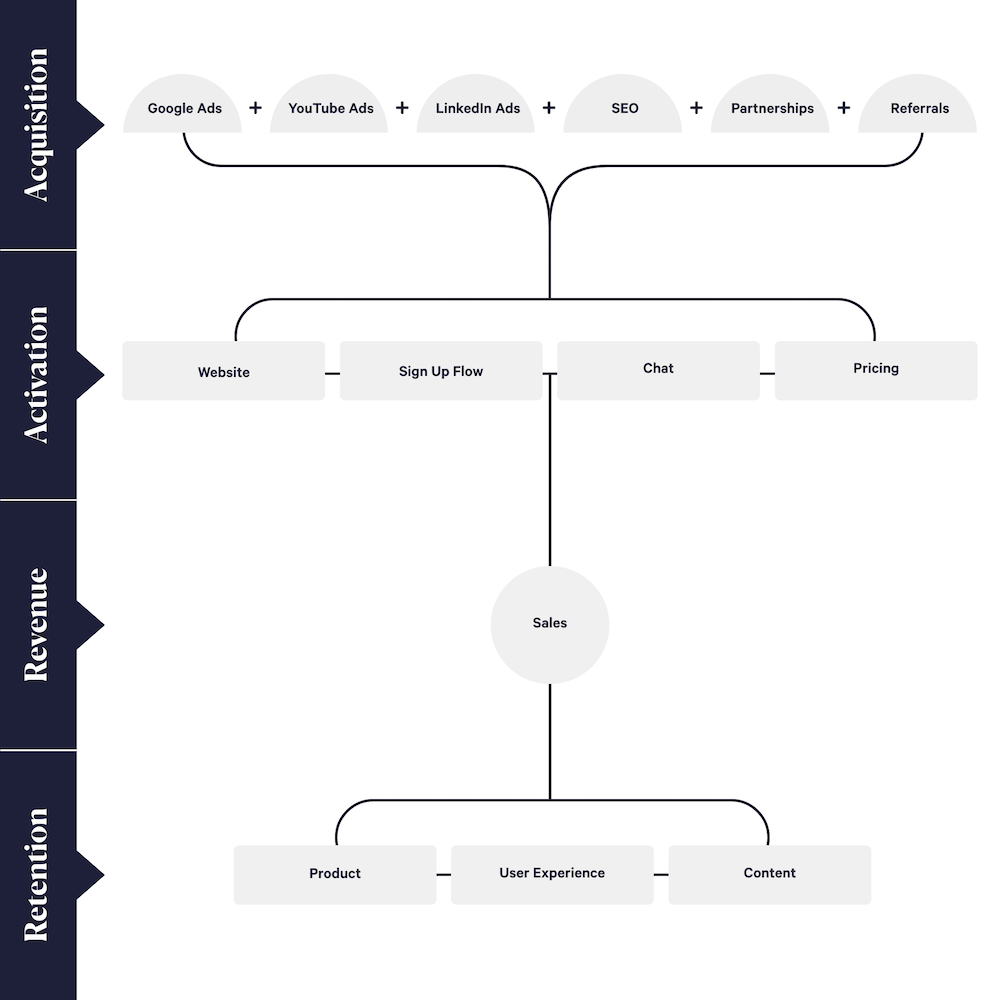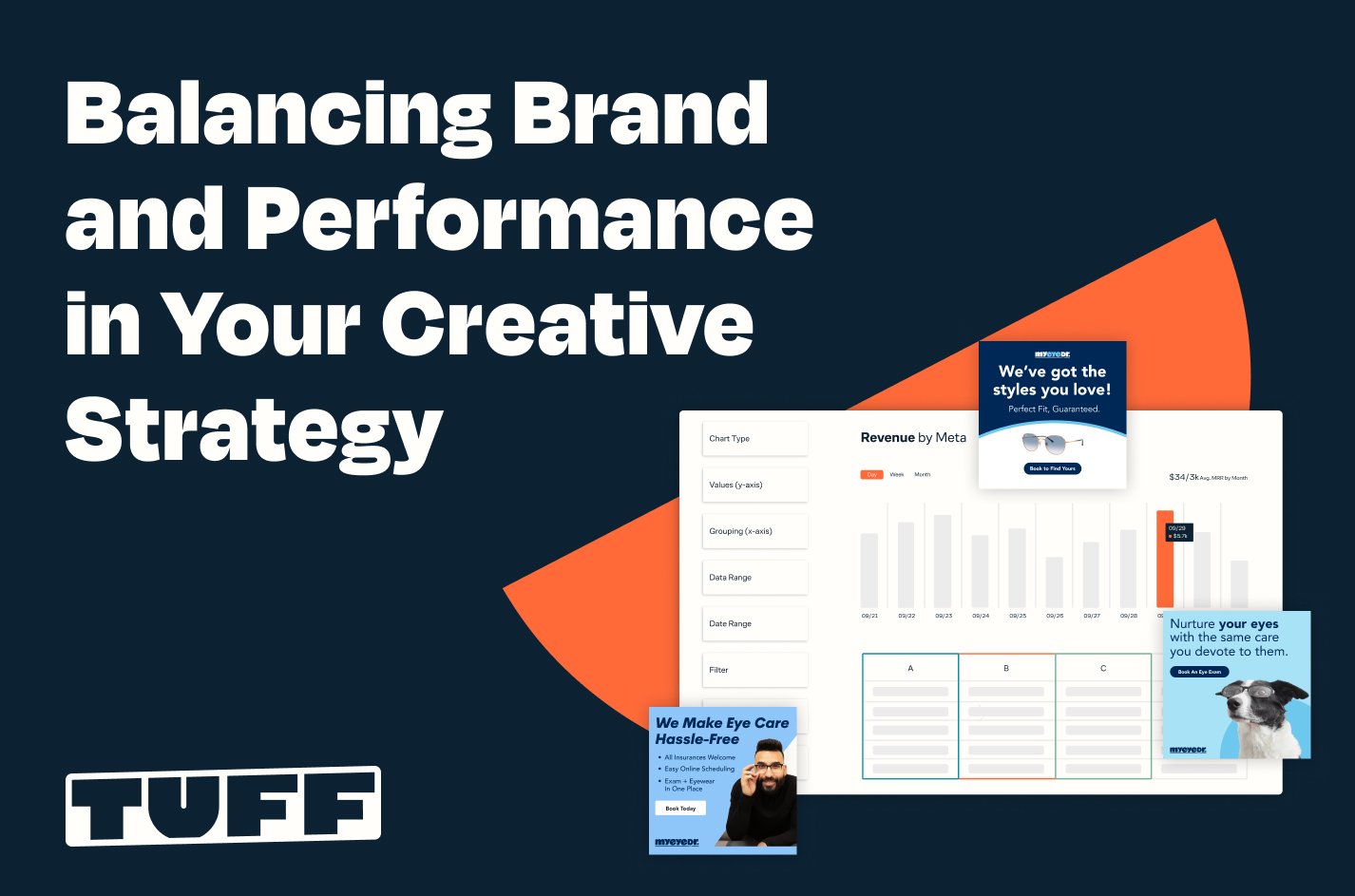How to Create an Initial Growth Model for Your Company
Running a startup? Then you know as well as we do that quick wins are instrumental to finding initial traction and getting the first lift that affirms to your team, your peers, and your investors that there’s a tangible future ahead. These quick wins are also important as you validate value props, hone in on your messaging, and think about audience development.
So, in the early days, the game plan is simple: learn, adapt, and ultimately, confirm that your service or product is going to solve a real and persistent problem. For your first year or more, you’ll get scrappy and find short-term momentum with tactics until you’re able to implement a growth model that works.
But—and here’s where it gets more complicated and necessitates more patience and expertise—once you find initial traction, you also need to find ways of operationalizing those early wins so they can become repeatable. That’s where a growth model for your company can be useful. Your growth model will help you transition from startup to scaleup. It’ll fuel your strategy throughout each stage of your company life cycle and act as a map that tells you and, importantly, your investors and other stakeholders in your company where you’re headed in the long run.
A solid model will also help you identify priorities to feed into your growth machine. From traffic to qualified leads to paying customers, you’ll be able to measure and optimize the full funnel to increase conversion rates and uncover pressure points that need extra attention. This will help you spend your time on things that will have an actual impact on your growth — and at the very least, eliminate things that don’t.
Here’s an example of a growth model that I built for one of our clients at Tuff. I built it for an early stage, B2B business with a SaaS offering for small businesses. When they started working with us in early 2021, the only leads they had generated were from referrals. They had been in business for less than a year and needed to prove to their investors (and themselves) that they could generate new leads across a number of channels. So, they turned to a growth marketing agency like Tuff.
The first thing we did was our homework. We started putting hypotheses in place about the target audience and the stickiest value props. In the early stages, value props will change and evolve based on feedback from customers and users but it’s important to have a starting point. Here’s what these value props originally looked like for this business.
Then, we formed the foundation of awareness — in other words, using our target audience, we selected our channel mix. Essentially, we asked: What channels will we use to generate traffic or leads that feed into our growth machine? From there, we outlined the list of tactics we would test out on each channel.
- Acquisition Channels = the way people hear about you for the first time.
- Tactics = a test you run on a channel.
When it comes to channel selection, we think about three things:
- How expensive is that channel based on historical metrics?
- What role in the funnel does it play? Is it top of the funnel (cheap traffic, lower quality) or bottom of the funnel (more expensive, higher quality)?
- Can we get our content in front of our target audience? Will we be able to target the people most likely to buy?
For this account, we started with Google, Bing, YouTube, Facebook, Instagram, LinkedIn, SEO, and Partnerships.
Finally, we then turned our attention to generating repeatable acquisition by focusing on conversion priorities. For this startup, this was things like:
- Adding pricing to the website
- Redoing the copy on the homepage based on the language most often used sales calls
- Adding in a page for each service
- Improving the UX on the blog
- Testing out three different signup flows to see what had the highest conversion
When a user lands on your website, product page, or app for the first time (or even the second or third), it’s critical to communicate value immediately and efficiently; there’s truly no better way to improve conversion.
By putting this growth model on paper and using it to fuel our strategy, it became extremely clear how to define the metrics that matter for the business, and work out how to measure them. Using Google Analytics and Freshsales (CRM), we can track all of these metrics, identify which ones need improvement, and outline how to focus our efforts:
Metrics:
- Spend: how much we’re spending on paid channels
- Traffic: how much traffic (new and returning) we’re generating
- Traffic by Source: where the traffic is coming from and how it impacts CVR
- CPC: what it’s costing us to get traffic
- Leads: the number of leads we’re capturing
- CVR: the percentage of traffic that’s converting to leads
- Clients: the number of clients we’re closing (new business)
- CVR: the percentage of leads that are converting to paying customers
- CAC: the total cost of acquiring a customer
We started using this particular growth model as our roadmap earlier this year and have stayed committed to this path for the last 8 months. With this approach, it’s not an overnight success. It’s a slow burn. We didn’t see a massive spike in leads within the first few months and even after that, the growth only started to trickle in.
Despite being impatient for results, we haven’t changed course and now, eight months later, we have a foundation in place for compounding results. Because we can measure across the entire funnel and have a clear understanding of the core metrics, we can prioritize our resources, hours, and time, and ultimately, spend it all on the right things.
The good news (much to all of our relief): we’re now consistently generating profitable, high-quality conversions for this client and have a repeatable formula to improve upon each month. We don’t have to rely on PR hits or an onslaught of referrals to hit our targets because we are in control of the pipeline on our own channels.
The truth is tough: founders are used to fighting tooth and nail for product/market fit and every single investor dollar. But even when a startup starts to grow, there’s an endless amount of work involved to establish your growth strategy and stick to it. It’s not for the faint of heart. But, it’s for this very reason that I established Tuff in the first place. With a team of marketers willing, able, and eager to build a repeatable, scalable model and execute to a T, you’re laying the foundation for success not just for tomorrow but for years to come.

Ellen is the founder at Tuff and one of the team’s core growth marketers. She is a versatile marketer with expertise in multiple channels – from ppc to seo to email to others – responsible for the experiments and testing. She is happiest when she’s on the ski hill or outside pointing her mountain bike downhill.






